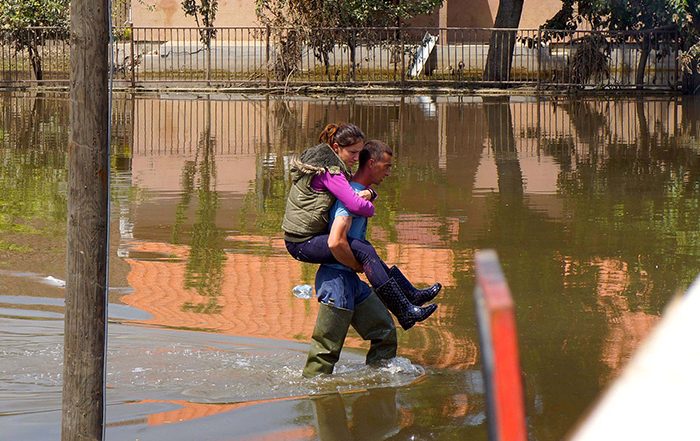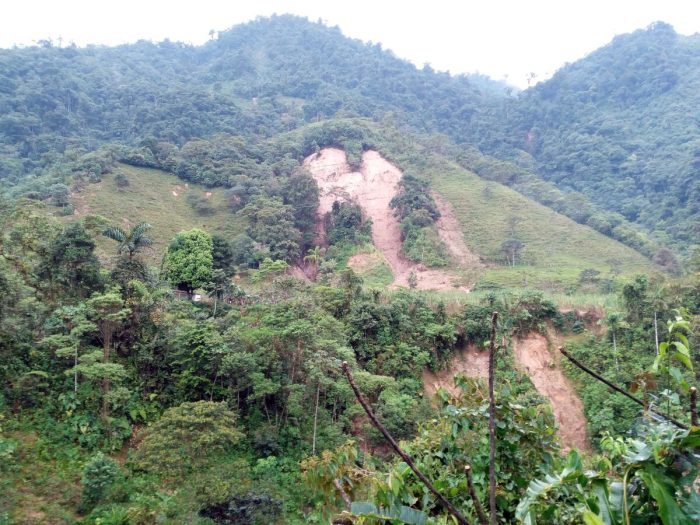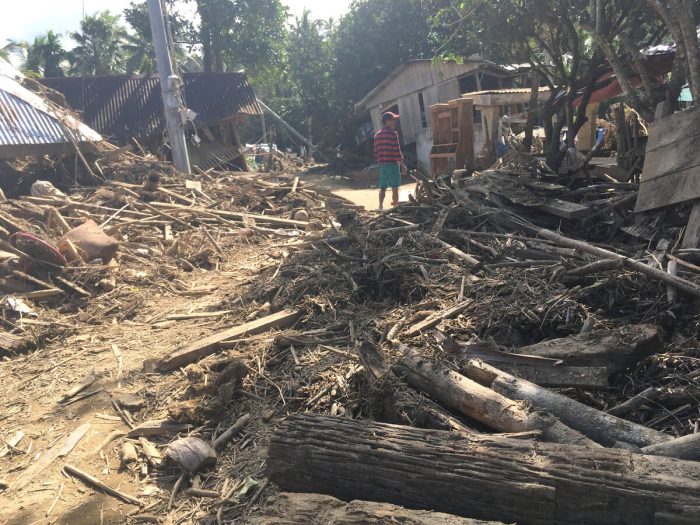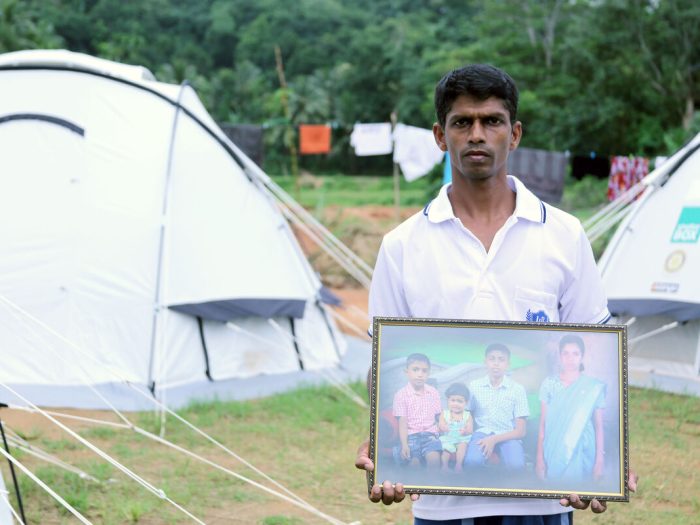
Disasters explained: floods
Floods are among the most common and devastating disasters. Read more about why they happen and their effects.
Landslides kill thousands of people around the world every year.
These events can bury whole villages, wipe away livelihoods and destroy houses. They often occur suddenly with very little warning.
But what causes landslides? And are they linked to human activity or climate change? Learn more on this page.


Landslides are defined as the movement of a mass of rock, debris or earth, typically down a slope. They occur when the forces pulling down on the earth or rocks (typically gravity) exceed the forces holding the materials on to the slope.
There are different types of landslide. These are defined by what type of material is involved and how it is moving. Falls and topples refer to large boulders or rocks falling away from a hill or mountain top. Spread or flow landslides can occur when material moves sideways and may spread out as it moves. Flows tend to happen when the earth lying on top of a slope becomes liquified in some way. A common form of this is a mudslide. It can also happen after earthquakes. Often, when landslides happen they are a mixture of the types of landslide, and contain mixtures of rock, debris and earth.
Some landslides can be very slow. Such landslides rarely cause deaths, but they can still cause damage. There is also the possibility that an event such as bad weather could turn them into a sudden landslide. Landslides that occur suddenly without warning are the most dangerous. People can be left without time to escape, or to protect their buildings and belongings.
Landslides can be caused by a number of things. Sometimes faults deep within the rock can develop into landslides. Erosion at the base of slopes also increases the likelihood of landslides. This could be natural, such as when the movement of oceans or rivers erodes the rock. But erosion can also be caused by manmade actions, such as building work and the creation of roads.
Landslides can also be caused by bad weather, especially storms and flooding. The sudden pressure of water running down the slope can push earth and debris with it. Melting snowfall running down hills can have a similar effect. Water is likely the most common cause of landslides around the world.
Conversely, drought can also cause landslides. As soil and earth dries out it becomes looser, and as such is more likely to fall away from the slope it is on. Droughts can also kill vegetation, and the roots from trees and plants can help hold soil on to slopes. Without them, landslides are more likely to occur. And drought conditions can result from heatwaves, which make wildfires more likely. These can also destroy vegetation and help lead to landslides. Another cause of a loss of vegetation is deforestation, which can have similar consequences.
As well as the weather, seismic events can also cause landslides. Earthquakes can shake loose rocks and soil with their force, triggering a landslide. They can also liquefy earth, making a mudslide more likely. Volcanoes can push a great deal of debris down their slopes, and shake rocks, and soil loose by the force of their eruptions.


Landslides can be caused by many things. Some result from natural events that occur – coastal erosion, earthquakes, and volcanoes. Storms, flooding and droughts are also a natural part of the earth’s climate.
However, scientists think that the climate crisis is increasing the strength of weather events. Severe storms leading to flooding are becoming more common. And rising temperatures could lead to more droughts. These make landslides more likely.
Humans could also cause landslides through deforestation, and construction work on unstable slopes. Expanding populations make it more likely people will have to live in areas at risk of landslides. And a lack of investment can mean those living there are unlikely to have preparation for and prevention against landslides.


Landslides can be devastating. The landslide in Papua New Guinea in May 2024 is thought to have killed around 2,000 people, and destroyed 150 homes. This landslide is thought to have been caused by weeks of heavy rain weakening the side of a mountain.
The largest on land landslide recorded was at Mount St Helens in the USA in 1980, as a result of seismic activity around the volcano. This landslide moved at 112 – 240 kmph (70 – 150 mph) and had an average depth of 46m (150 feet). It left a substantial crater in the side of Mount St Helens, and highlights some of the dangers for people living on the slopes of or at the base of volcanoes.
Landslides are a common occurrence, and could become more likely. This puts at risk the people living at the bottom of slopes; particularly mountains, volcanoes, steep hills or in canyons. Each year thousands of people are killed by landslides, and many homes destroyed. Even families who escape landslides could find their homes and livelihoods buried by meters of rubble.
Some landslides can occur underwater too, particularly after earthquakes. If this happens in oceans it can trigger tsunamis. These pose a threat to any coastal communities nearby.
We have responded to landslides in the past, particularly when linked with flooding. This included in Nepal in 2014, Sri Lanka in 2016, Peru in 2017 and Bolivia in 2018. We have also supported communities in the Philippines after cyclones or tropical storms triggered flooding and landslides.
Landslides are common. They can happen anywhere in the world. It’s estimated that 400,000 landslides are triggered by heavy rainfall each year. Around an additional 130,000 are caused by earthquakes. Landslides kill thousands of people every year, and cause billions of pounds worth of damage.
A mudslide is a type of landslide – normally a type of landslide known as a spread or a flow. Mudslides occur when loose earth and debris mixes with water to form mud. They’re typically triggered by a large amount of water hitting the ground over a short period of time. This is often through heavy rainfall, but can also be through rapidly melting snow. Mudslides can also sometimes be triggered through seismic events like earthquakes.
Sometimes people refer to ‘rock avalanches’, which is a type of landslide. However the term avalanche is normally used for the movement of snow, not rock or earth. While avalanches are not landslides, they can be just as dangerous. Learn more about them here.